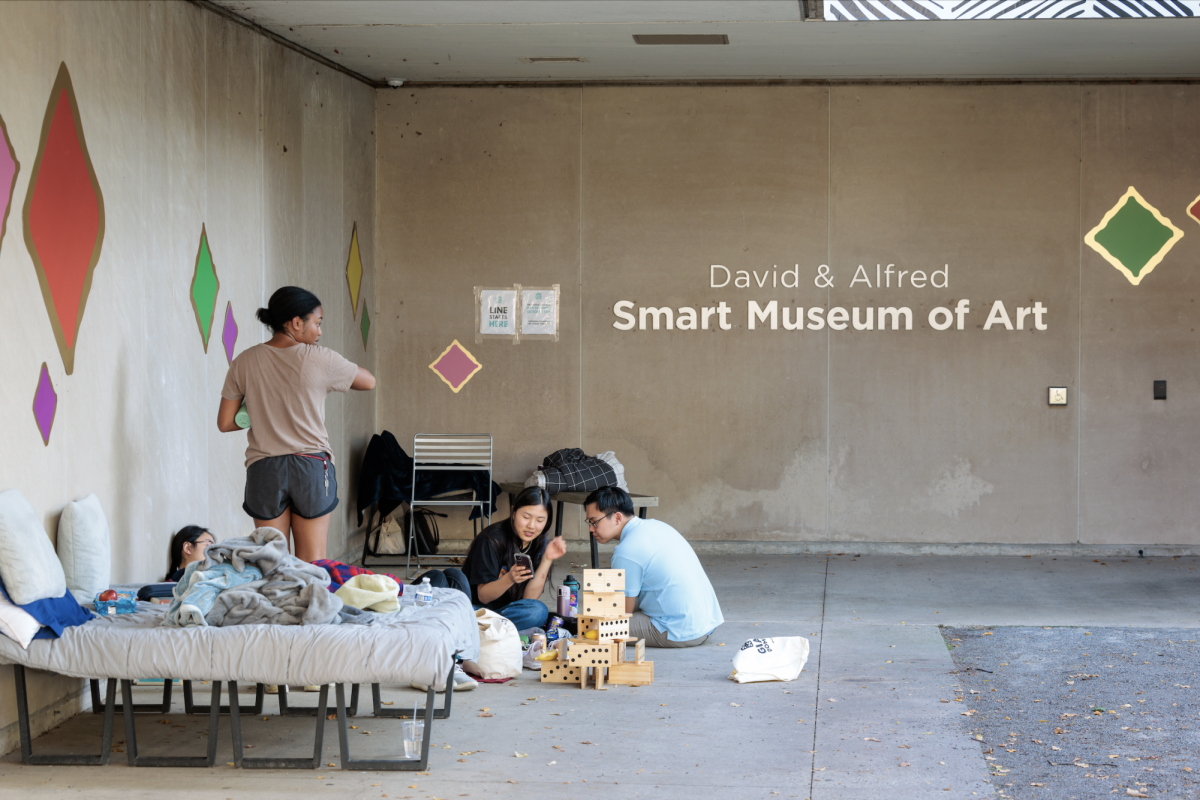This fall, changes to the University of Chicago’s campus policies following last year’s protests impacted the Smart Museum’s long-running “Art to Live With” program. The event, which allows students to borrow artworks from the museum’s collection for a year, had to adapt to the University’s updated guidelines for on-campus activities, particularly regarding overnight camping.
Originally based on a 120-work collection donated by alumnus Joseph R. Shapiro EX ’34, “Art to Live With” has been a hallmark of student engagement at the Smart Museum since 1958. Though the program became defunct in the 1980s, it was revived in 2017 through the support of Gregory Westin Wendt A.B. ’83.
In past years, committed students have camped outside the Smart Museum for days, eager to claim coveted works by renowned artists like Picasso, Goya, and Chagall. Lauren Payne, associate registrar of art in public spaces, recalled that “some die-hard enthusiasts [started camping] as early as four days before the event.”
However, on September 24, Interim Dean of Students Michael Hayes informed the campus community of several policy revisions via email. Among the updates was a prohibition on staying overnight in outdoor structures on campus and the requirement that any erected structures, such as tents, receive prior approval. Additionally, amplified sound is now restricted to certain times of the day. These changes are part of the University’s ongoing efforts to “support free expression while restricting individuals from using violence, threats, or harassment while expressing their opinions,” Hayes wrote.
For the “Art to Live With” program, the ban on overnight camping altered a key aspect of student participation. “This year, we were already considering revising the camping guidelines due to safety concerns,” Payne said. “However, when we were informed of the University’s policy changes two weeks before the event, we had to clarify these updates in our communications and promotions.”
In response to student feedback, the museum introduced earlier check-in times on Saturday and improved accessibility to event information through an expanded website. These changes aimed to create a smoother, more enjoyable experience while complying with the new restrictions.
“Our check-in events… featured DJs from WHPK as well as lawn games and classic Chicago hotdogs. The enthusiasm and energy [were] high,” Payne said. “Overall, the number of participants was slightly down from previous years, but there was not a significant decrease.”
Student participants had mixed reactions to the new format. Marcus Kuo, a second-year student who participated in “Art to Live With” this year and last year, reflected on the differences.
“Last year, people camped out as early as Thursday,” he said. “There was a competitive element to it, where those who were willing to stay outside longer would secure a better position in line. This year, because camping was not allowed, people started lining up at 3 a.m. instead.”
Kuo acknowledged that while the new rules made the process less intense, it also diminished some of the “camaraderie” associated with overnight camping.
“This year, we were finished with check-ins by 8 p.m., and it didn’t feel like we were really waiting overnight for a piece of art,” Kuo said. “That said, I think the new format was more manageable for many students.”
Another second-year student, Natalie Sauer, echoed similar sentiments. Sauer, who participated in “Art to Live With” for the second time, felt that the lack of camping took away from the community-building aspect of the event. “Last year, camping out with friends created an opportunity to meet and interact with other students who shared a passion for art,” Sauer said. “This year, it felt more impersonal. People just lined up, checked in, and then left.”
Though Sauer expressed a preference for the event’s previous format, she acknowledged that the Smart Museum’s hands were tied by the University’s new regulations. “I would love to see camping return in the future, but I realize the Museum can’t control the University’s policies,” she said. “The event was still enjoyable, but it lacked the social engagement that camping fostered.”
Looking ahead, Payne emphasized that the “Art to Live With” program is constantly evolving, and student feedback remains a crucial element of its success. “We always prioritize the student experience,” she said. “We are already brainstorming ideas for next year, and I’m excited about the potential for further enhancements to the event.”









